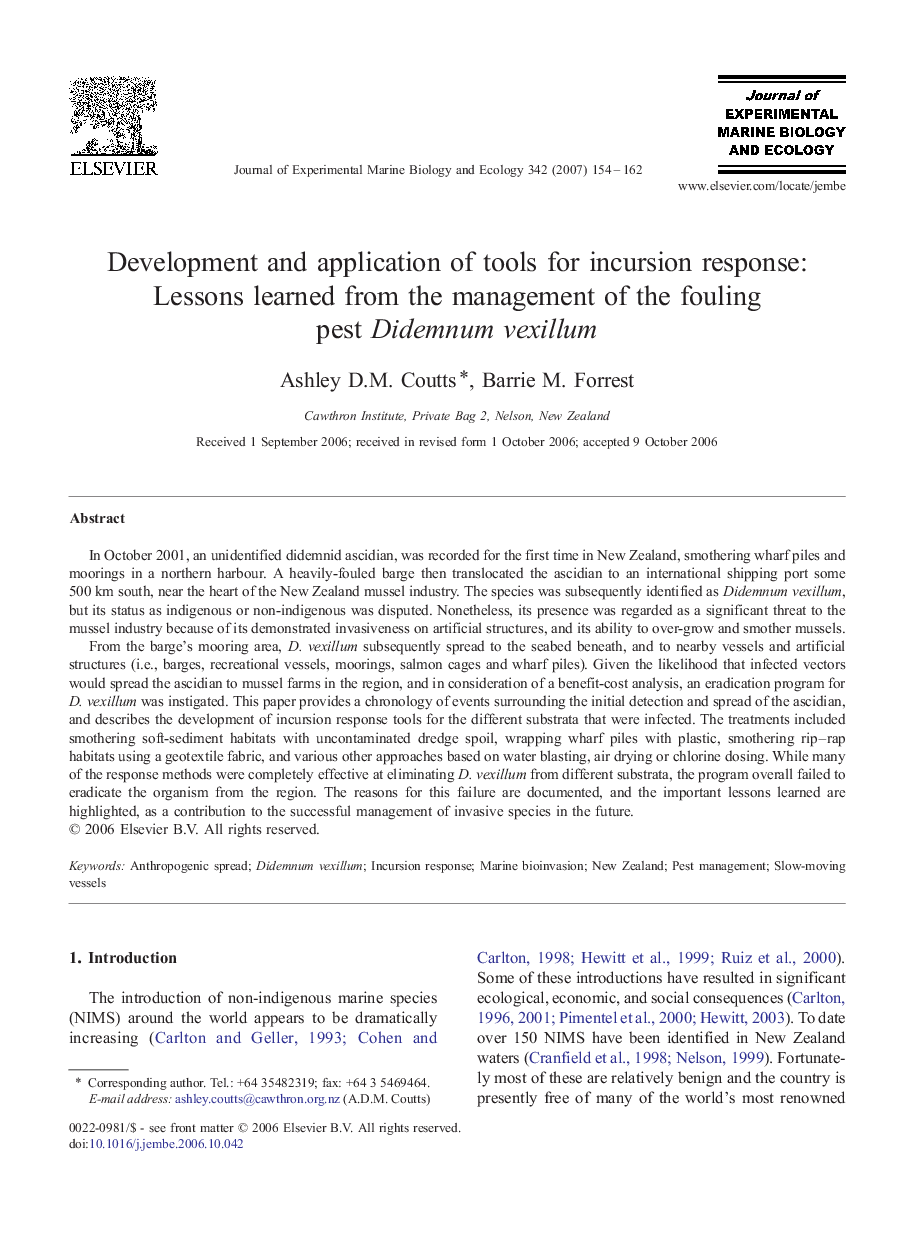| Article ID | Journal | Published Year | Pages | File Type |
|---|---|---|---|---|
| 4397808 | Journal of Experimental Marine Biology and Ecology | 2007 | 9 Pages |
Abstract
From the barge's mooring area, D. vexillum subsequently spread to the seabed beneath, and to nearby vessels and artificial structures (i.e., barges, recreational vessels, moorings, salmon cages and wharf piles). Given the likelihood that infected vectors would spread the ascidian to mussel farms in the region, and in consideration of a benefit-cost analysis, an eradication program for D. vexillum was instigated. This paper provides a chronology of events surrounding the initial detection and spread of the ascidian, and describes the development of incursion response tools for the different substrata that were infected. The treatments included smothering soft-sediment habitats with uncontaminated dredge spoil, wrapping wharf piles with plastic, smothering rip-rap habitats using a geotextile fabric, and various other approaches based on water blasting, air drying or chlorine dosing. While many of the response methods were completely effective at eliminating D. vexillum from different substrata, the program overall failed to eradicate the organism from the region. The reasons for this failure are documented, and the important lessons learned are highlighted, as a contribution to the successful management of invasive species in the future.
Related Topics
Life Sciences
Agricultural and Biological Sciences
Aquatic Science
Authors
Ashley D.M. Coutts, Barrie M. Forrest,
